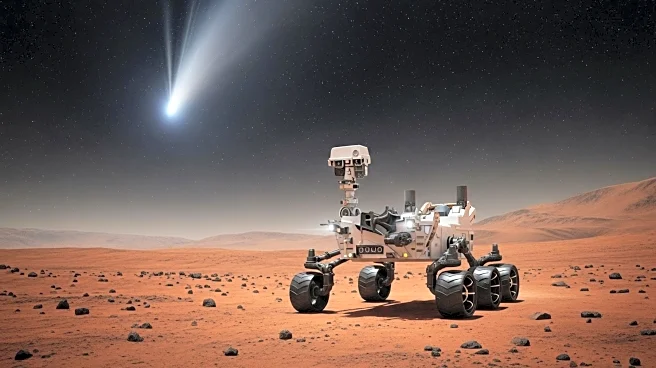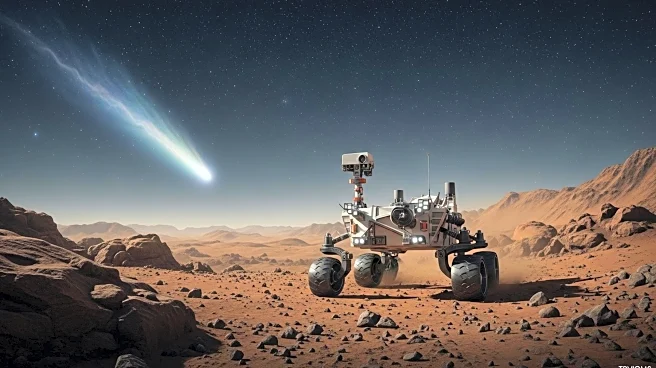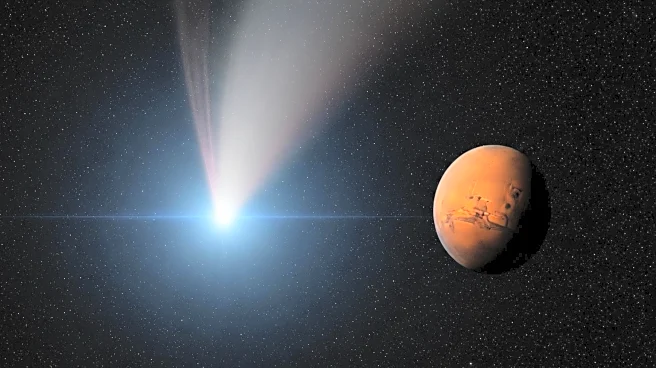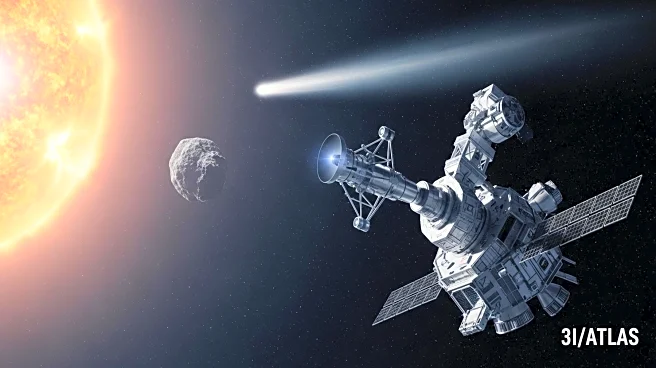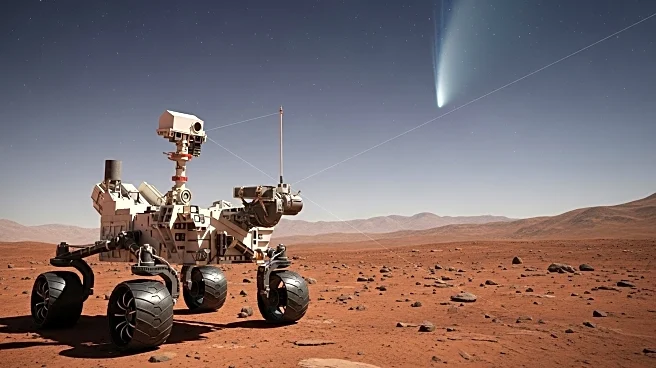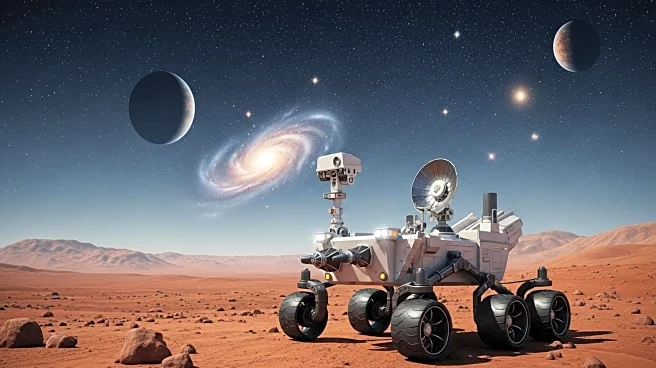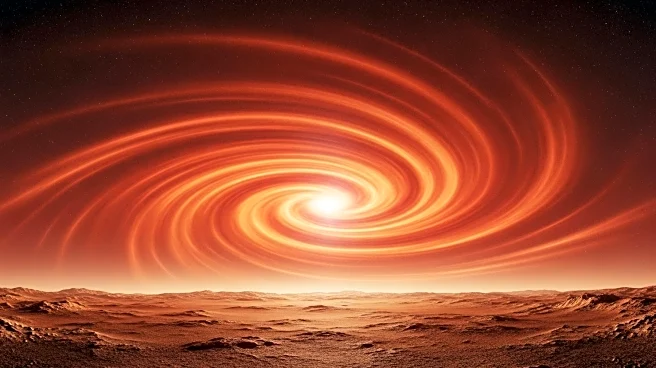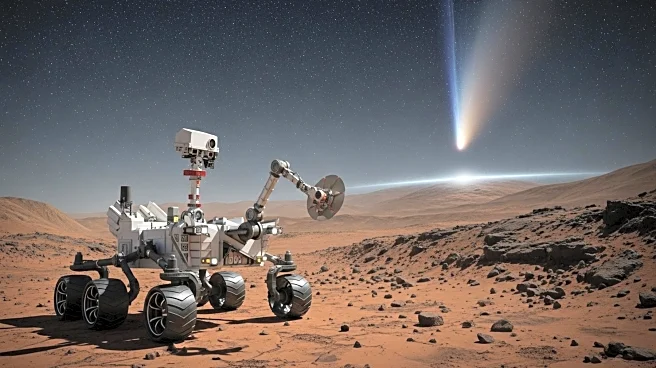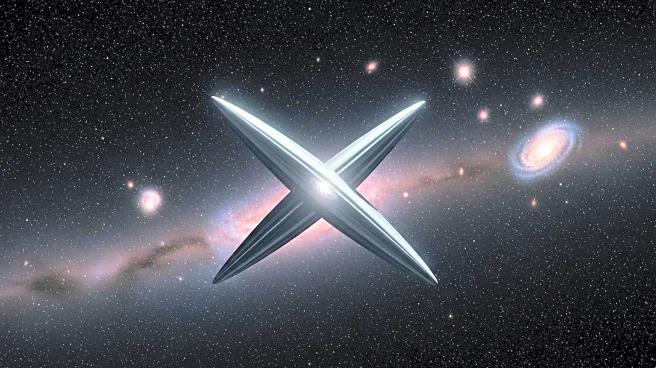What's Happening?
On October 3, 2025, the European Space Agency's ExoMars Trace Gas Orbiter captured images of the interstellar comet 3I/ATLAS as it passed within 19 million miles of Mars. The comet, discovered in July by the Asteroid Terrestrial-impact Last Alert System (ATLAS) telescope in Chile, is the third confirmed interstellar object observed in our solar system. The orbiter used its Colour and Stereo Surface Imaging System to photograph the comet, which is significantly fainter than typical targets. The observations are part of a broader campaign by ESA to study the comet as it travels through the solar system, providing insights into its ancient and exotic origins.
Why It's Important?
The observation of comet 3I/ATLAS is significant as it offers astronomers a rare opportunity to study an interstellar object, which carries information about distant realms beyond our solar system. These insights could enhance understanding of the formation of worlds far from Earth. The comet is believed to be the oldest ever observed, predating the solar system by approximately three billion years. Such studies could potentially influence future space exploration strategies and contribute to the broader scientific understanding of cosmic history and the evolution of celestial bodies.
What's Next?
ESA's Mars Express orbiter also attempted to photograph the comet, although initial images have not yet resolved 3I/ATLAS due to shorter exposure times. Further analysis of the data collected by the ExoMars Trace Gas Orbiter is expected to reveal more details about the comet. Additionally, ESA's JUICE probe, en route to Jupiter, will begin observing the comet on November 2, shortly after its closest approach to the sun. These continued observations will help scientists gather more comprehensive data on the comet's characteristics and trajectory.
Beyond the Headlines
The study of interstellar comets like 3I/ATLAS could have long-term implications for understanding the origins of our solar system and the potential for life beyond Earth. These objects may hold clues about the chemical composition and physical conditions of other star systems, offering a glimpse into the processes that govern planetary formation and evolution. The ethical and philosophical dimensions of such discoveries could challenge existing paradigms about humanity's place in the universe and inspire new scientific inquiries.

